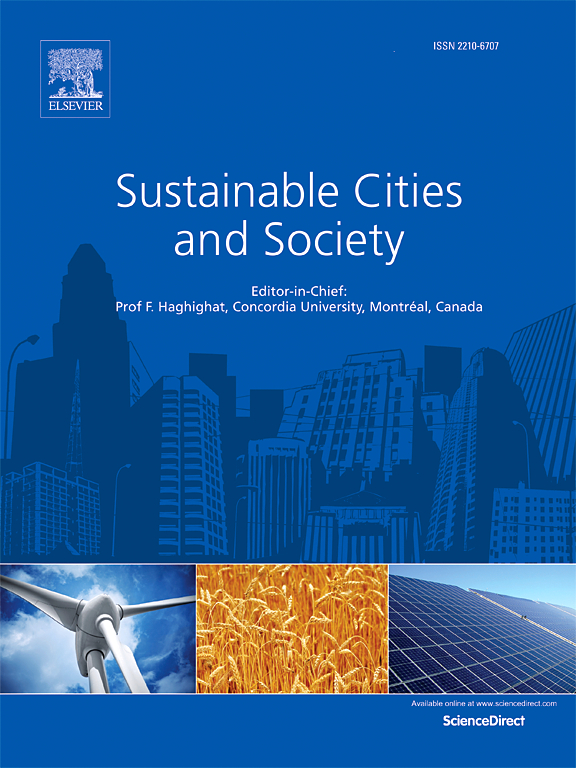Isolating urban form impacts on spatiotemporal distribution of surface meteorology in coastal cities during extreme heat events
IF 10.5
1区 工程技术
Q1 CONSTRUCTION & BUILDING TECHNOLOGY
引用次数: 0
Abstract
Coastal cities in tropical and temperate zones are prone to heat waves, and the interplay between moist air and urban heat islands exacerbates the risk of heatstroke. However, the complexities introduced by land–sea temperature and humidity gradients pose challenges in quantifying the influence of urban forms on thermal environments. Thus, we conducted simulations using the Weather Research and Forecasting model for 49 high-temperature days across 2018–2021 in Tokyo—a developed coastal city. Control experiments were designed to eliminate the land–sea gradients and isolate the independent effects of urban form on the spatial fluctuation of pedestrian-level air temperature (ΔTa_u) and specific humidity (ΔSH_u). The findings reveal that the correlation between urban form and ΔTa_u is stronger than that with ΔSH_u. A positive linear relationship exists with building density at midday (R2 = 0.72) and building surface area at night (R2 = 0.78). In contrast, ΔSH_u exhibits a negative linear relationship at midday (R2 = 0.60) and a weak correlation with urban form at night (R2 < 0.15). Notably, ΔTa_u and ΔSH_u displayed clear diurnal variations, with the most significant spatial dispersion observed at midday (−1.3 to 2.2 K and −0.8 to 0.4 g/kg, respectively). Conversely, as the spatial patterns of ΔTa_u and ΔSH_u exhibited minimal fluctuations across varying high-temperature days, their historical averages effectively represented their general distribution. Furthermore, a preliminary method is proposed, utilizing a simple meteorological model along with empirical ΔTa_u and ΔSH_u for the rapid prediction of thermal environments during future heat events.
求助全文
约1分钟内获得全文
求助全文
来源期刊

Sustainable Cities and Society
Social Sciences-Geography, Planning and Development
CiteScore
22.00
自引率
13.70%
发文量
810
审稿时长
27 days
期刊介绍:
Sustainable Cities and Society (SCS) is an international journal that focuses on fundamental and applied research to promote environmentally sustainable and socially resilient cities. The journal welcomes cross-cutting, multi-disciplinary research in various areas, including:
1. Smart cities and resilient environments;
2. Alternative/clean energy sources, energy distribution, distributed energy generation, and energy demand reduction/management;
3. Monitoring and improving air quality in built environment and cities (e.g., healthy built environment and air quality management);
4. Energy efficient, low/zero carbon, and green buildings/communities;
5. Climate change mitigation and adaptation in urban environments;
6. Green infrastructure and BMPs;
7. Environmental Footprint accounting and management;
8. Urban agriculture and forestry;
9. ICT, smart grid and intelligent infrastructure;
10. Urban design/planning, regulations, legislation, certification, economics, and policy;
11. Social aspects, impacts and resiliency of cities;
12. Behavior monitoring, analysis and change within urban communities;
13. Health monitoring and improvement;
14. Nexus issues related to sustainable cities and societies;
15. Smart city governance;
16. Decision Support Systems for trade-off and uncertainty analysis for improved management of cities and society;
17. Big data, machine learning, and artificial intelligence applications and case studies;
18. Critical infrastructure protection, including security, privacy, forensics, and reliability issues of cyber-physical systems.
19. Water footprint reduction and urban water distribution, harvesting, treatment, reuse and management;
20. Waste reduction and recycling;
21. Wastewater collection, treatment and recycling;
22. Smart, clean and healthy transportation systems and infrastructure;
 求助内容:
求助内容: 应助结果提醒方式:
应助结果提醒方式:


